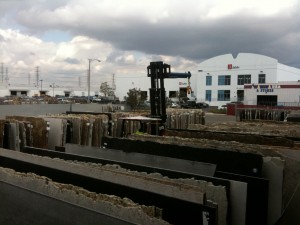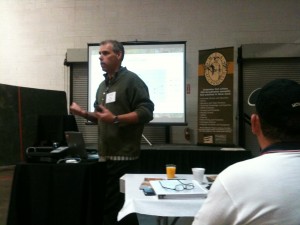Moraware is a sponsor of the Marble Institute of America seminar series for 2011, as part of our greater mission of helping countertop fabricators improve their businesses.
 I’m not a stone installer, but I learned some tips on selecting the right stone for a particular application, preparing a surface for flooring, and caring for natural stone. Here’s part 1 of my notes from the installation seminar that was held at daltile in Anaheim on Feb 23, 2011.
I’m not a stone installer, but I learned some tips on selecting the right stone for a particular application, preparing a surface for flooring, and caring for natural stone. Here’s part 1 of my notes from the installation seminar that was held at daltile in Anaheim on Feb 23, 2011.
First, Danny MacNair from daltile went through an overview of the basics of stone and choosing the right material for a particular homeowner, architect, or commercial job. Danny started his talk with a description of natural stone materials. This was a great overview of how popular natural stones can be categorized based on their origins, composition, and uses.
- Granite – Igneous stone – composed of silica (feldspar, quartz, mica) – Very durable – usually polished
- Marble – Metamorphic stone – composed of calcium (calcite, dolomite) – moderately durable – typically polished
- Quartzite – Metamorphic stone – composed of silica – very durable – hard and resilient – suitable for a honed finish
- Soapstone – Metamorphic stone – composed of talc, magnesite, chlorite – soft to the touch – inert and unaffected by alkali or acids
Knowing the difference in how materials handle high traffic areas, how they react with chemicals, and age with time is incredibly important when you’re choosing stone. There’s a trend of using marble for vanities and even some kitchen counters, but Danny said that it’s really important to set homeowner expectations correctly when using more porous stones like this in applications where there’s a good chance that they’ll end up becoming etched or discolored.
Danny also gave a great overview of the stone production process. He described various types of quarries, the block extraction process, how the structure of the block is evaluated, then how it goes through a gang saw and processing to create the slabs that fabricators use. His pictures of a slate quarry really were shockingly primitive – it looked like a family with a bunch of hammers. I’m pretty sure that at least slate has been extracted the same way for hundreds of years.
He also briefly covered the ASTM standards that are used to measure abrasion resistance, flexural strength, density, and the other characteristics that are defined by the physical and chemical composition of a stone.
Overall, I imagine the contents of this talk would be really useful if you’re trying to describe the stone industry to a novice or a potential customer.
There were two other speakers – covered in the next post.
Want to know more? At Moraware, we make software for countertop fabricators. JobTracker is scheduling software that helps you eliminate the time you waste looking for job folders. RemnantSwap is a place to buy and sell granite remnants with fabricators near you.




